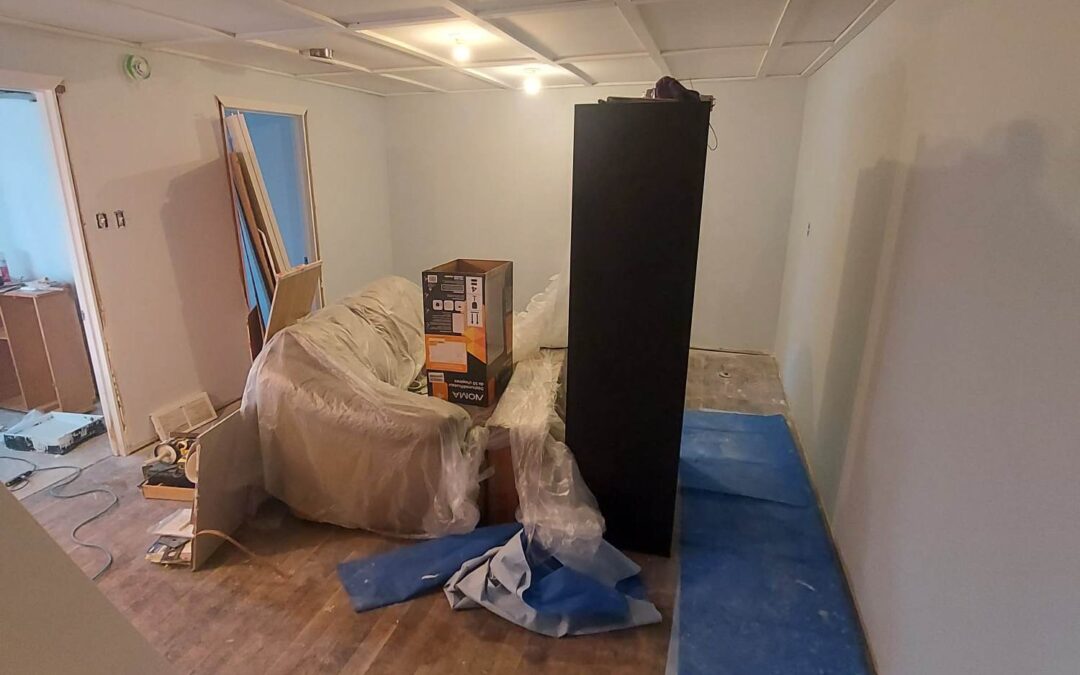Expert Home Painting Guide – DIY Tips and Tricks
Introduction
Welcome to our comprehensive home painting guide! Has your living room lost its charm? Is your exterior paint peeling off? Well, a fresh coat of paint could be all you need to breathe new life into your home. We’ve curated this guide to transform your home painting project into an exciting and rewarding adventure. It’s time to roll up your sleeves and dive in!
The Importance of Home Painting
Home painting is more than just a colour splash. It’s a protective shield for your home. A well-applied coat of paint protects your walls from the harsh Winnipeg weather, preventing moisture seepage that can lead to mold and structural damage. Beyond protection, painting also increases your home’s resale value and creates an aesthetic that can boost your mood and productivity.
Preparation Steps Before Painting
Choosing the Right Paint
You might be tempted to pick the first paint colour that catches your eye. But remember, the right choice can make your room appear larger, brighter, and more inviting. Consider the room’s function, size, and lighting. Are you painting a relaxing bedroom or a lively kitchen? Light colours can make a small room seem larger, while dark shades add a cozy feel to spacious areas.
You also need to choose between oil-based and water-based paints. Oil-based paints are durable and have a smooth, glossy finish. They are great for high-traffic areas. On the other hand, water-based paints dry quickly, are easy to clean, and are less harmful to the environment.
Protecting Your Furniture and Floor
Imagine spilling navy blue paint on your cream carpet. Nightmare, right? Before you open that paint can, make sure you’ve protected your furniture and floor. Use drop cloths or plastic covers to shield your belongings from paint splatters.
Prepping the Walls
Clean walls lead to a smooth, long-lasting paint job. Start by removing dust and dirt from your walls with a damp cloth. Repair any holes or cracks, and then sand the surface for an even finish. Finally, apply a primer to make sure the paint adheres properly.
Your Step-by-Step Home Painting Guide
Priming
Priming is like setting a blank canvas for your masterpiece. A primer will ensure your paint sticks better and lasts longer. It also helps bring out the true colour of your paint.
Painting Techniques
Grab your brush or roller and get ready to transform your space. Start painting from the top of the wall and move downwards. Maintain a wet edge to avoid visible brush strokes or roller lines. Follow a “W” or “N” pattern for an even distribution of paint.
Finishing Touches
Let your walls dry completely before removing any tape or coverings. Touch up any spots that you missed, and then step back to admire your handiwork!
Common Painting Mistakes to Avoid
Ensure your DIY project doesn’t become a D-I-why did I do this?! Avoid these common mistakes: skipping the prep work, using cheap materials, ignoring the weather for exterior painting, and rushing through the job.
Hiring a Professional vs. DIY Painting
DIY home painting can be a rewarding experience, but it might not be for everyone. If your project involves tall walls, textured or patterned painting, or if the prep work is extensive due to poor wall conditions, you should consider hiring a professional. They’ll not only save you time but also ensure a high-quality finish.
Home painting isn’t just a chore – it’s an opportunity to refresh, protect, and increase the value of your home. Whether you choose to DIY or hire a professional, remember the tips and techniques discussed in this guide. Happy painting!
Key Takeaways:
- The right paint selection can dramatically transform your home.
- Proper preparation before painting ensures a smoother, longer-lasting finish.
- Professional painting techniques can be learned and applied in DIY projects.
- Common painting mistakes can be avoided with careful planning and execution.
- Hiring a professional painter can provide value in terms of expertise and time-saving.
Frequently Asked Question (FAQs) About Home Painting
Why is home painting important?
Home painting is not just about aesthetics. It protects your home from the elements, increases its resale value, and can even influence your mood and productivity.
What factors should I consider when choosing paint?
Consider the room’s function, size, lighting, and your personal style. Also, understand the differences between oil-based and water-based paints, as well as between different finishes like matte, semi-gloss, and gloss.
What's the process of preparing walls for painting?
Begin by removing dust and dirt. Repair any holes or cracks and then sand the surface for a smoother finish. Finally, apply a primer to ensure the paint adheres properly.
Can you share some professional painting techniques?
Start painting from the top of the wall and move downwards. Use a “W” or “N” pattern for even distribution. Always maintain a wet edge to avoid visible brush strokes or roller lines.
When should I hire a professional painter instead of doing it myself?
If your project involves tall walls, textured or patterned painting, or if the prep work is extensive due to poor wall conditions, you should consider hiring a professional. Additionally, professionals can save you a lot of time and ensure a high-quality finish.
What common painting mistakes should I avoid?
Avoid skipping the prep work, using cheap materials, ignoring the weather for exterior painting, and rushing through the job. Also, remember to protect your furniture and floors before starting.
How long does it usually take to paint a room?
The time it takes can vary depending on room size, the number of coats, and the type of paint used. However, for an average room, it might take a day for preparation and another for painting. Remember, paint also needs time to dry between coats
Is there an ideal order to follow when painting a room?
Yes, generally it’s best to start with the ceiling, then move to the walls. The trim, windows, and doors are usually painted last.
Can I paint over wallpaper?
While it’s possible, it’s not recommended because paint can cause the wallpaper to peel or bubble. It’s better to remove the wallpaper, prep the wall, and then paint.
How can I ensure a long-lasting paint job?
Preparation is key. Clean, repair, and prime your walls first. Use high-quality paint and apply at least two coats. Following these steps can help ensure your paint job lasts longer.

